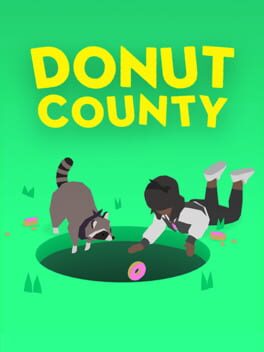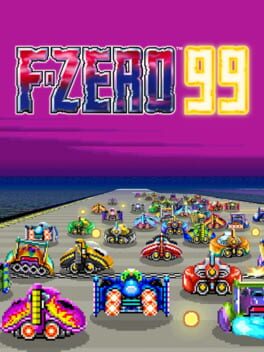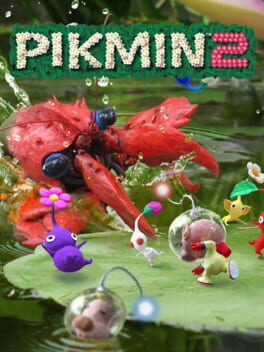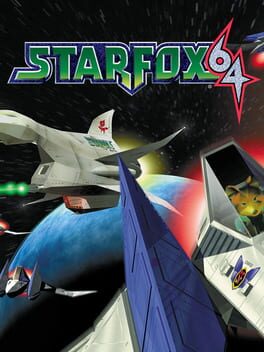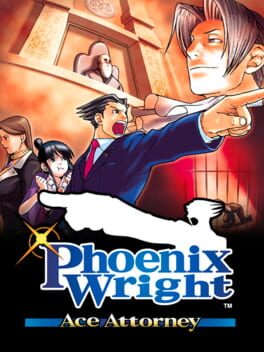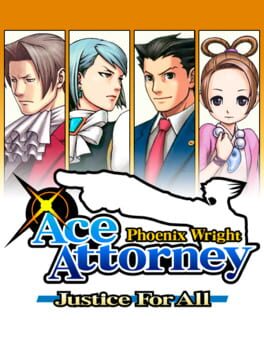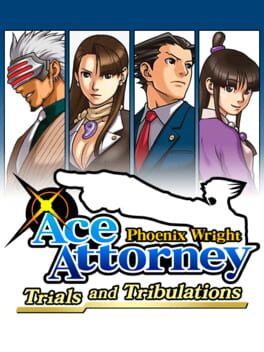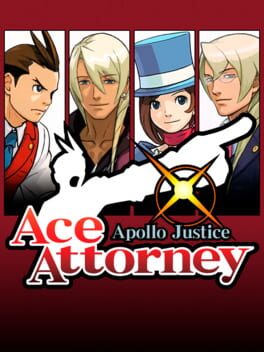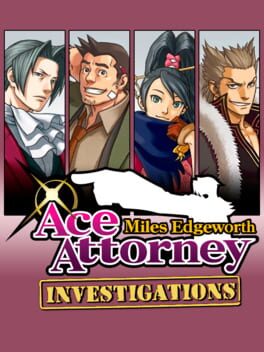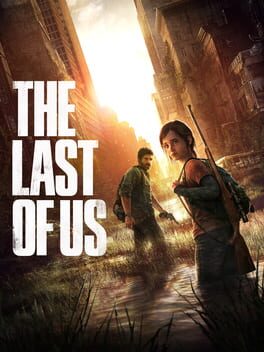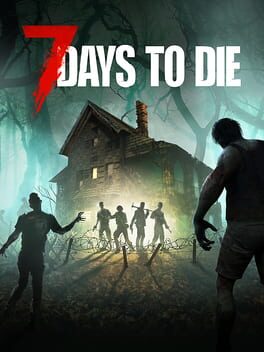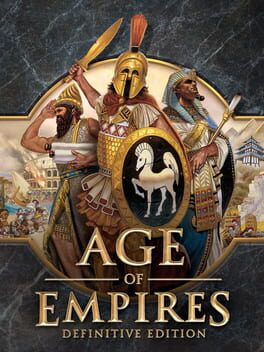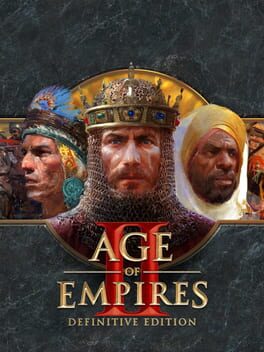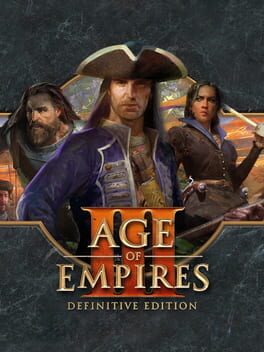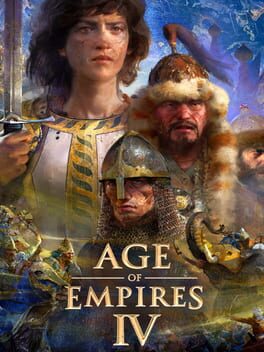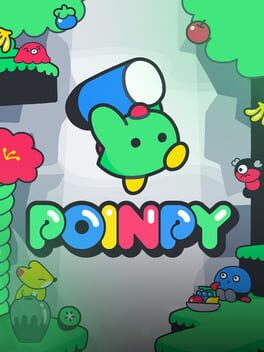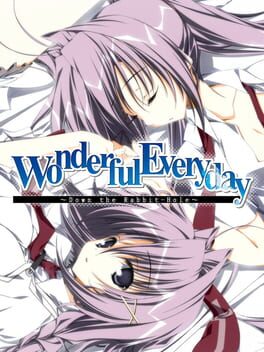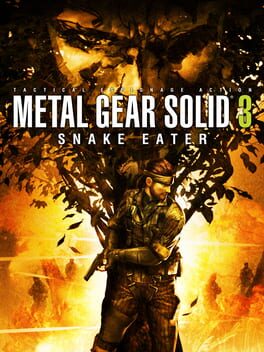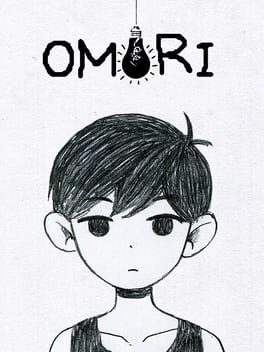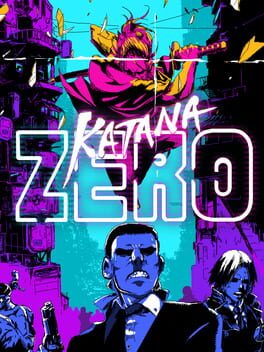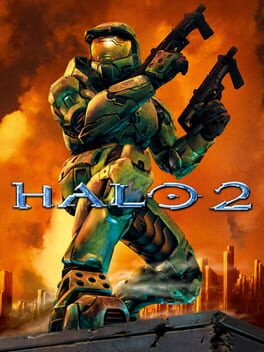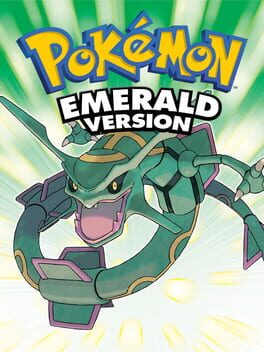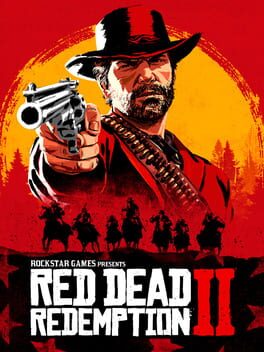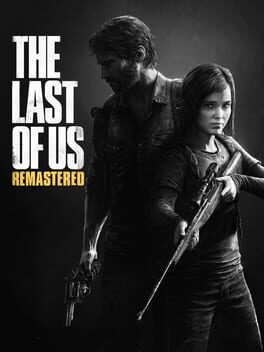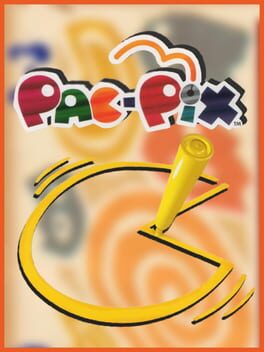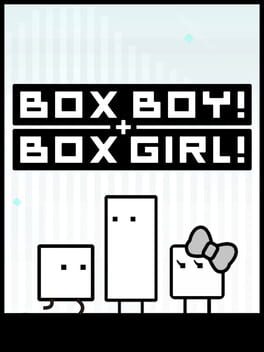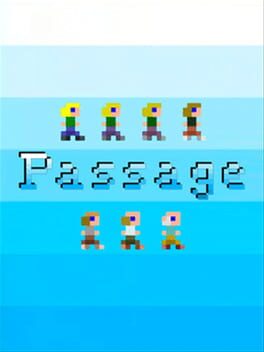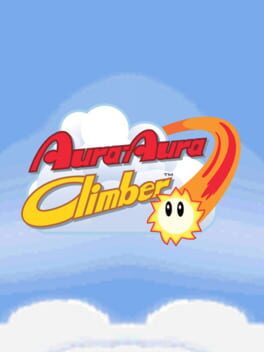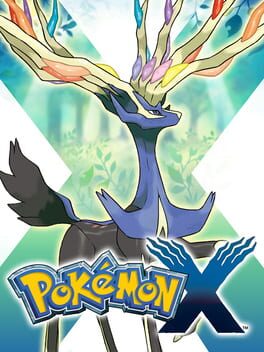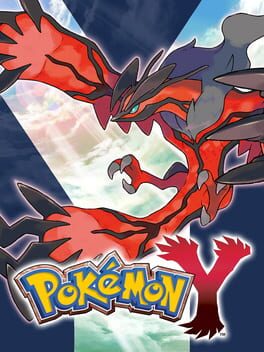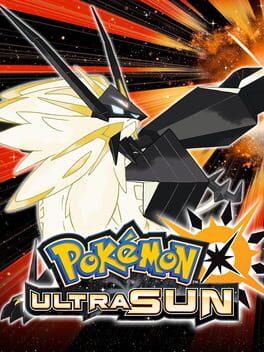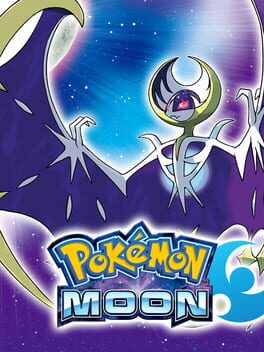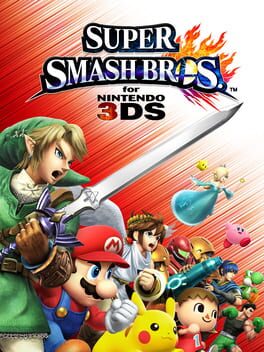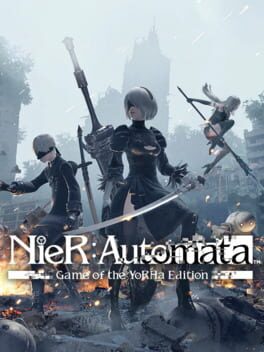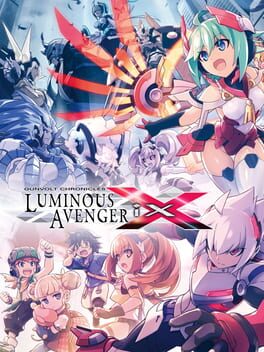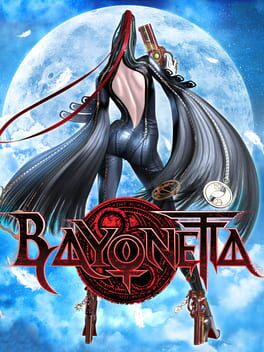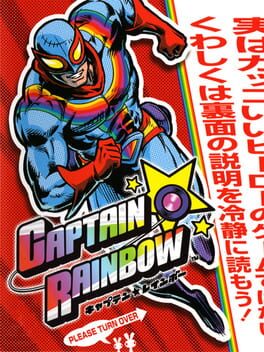PhilthePill
BACKER
79 reviews liked by PhilthePill
Super Mario Galaxy
2007
All the way back in 2010, me and my brother were gifted a Wii during our first week of school that Fall. I had just started the 5th grade and a week or two prior I had rented and played a chunk of Super Mario Galaxy 2 on my dad's friend's Wii during a beach trip. I absolutely loved what I played of it but after the trip was over, I had to return the game back to the rental store and of course the Wii was not mine, so I craved more. Like I said, my dad gifted us a Wii and with it was Super Mario Galaxy. My brother got the Cloudy With a Chance of Meatballs game so it's pretty clear only one of us got a quality title. I was infactuated with this game. I can still remember running home from school, going right to my Wii as I couldn't wait to play it any longer. I'd wake up super early on weekends too just to play more. This and Galaxy 2 were basically the first non-licensed game's I truly loved and I'm very thankful for that as it made me want to play more Nintendo titles afterwards. As you can see I adore this game, let's talk about why!
I think the defining factor as to why people love this game so much (besides the story) is it's atmosphere and portrayal of space. Sure, you have more goofy or lighthearted galaxies like Honeyhive or Beach Bowl that wouldn't feel out of place in another game. But a good chunk of the galaxies in this game, as well as the Comet Observatory, just have this really unique emptyness or marvel that really makes you feel like you're in space. Take Space Junk Galaxy for example. It's a very serene and solemn galaxy where most of the setting is literal space with some junk spread throughout just like the name implies and it's very relaxing to go through. A lot of the time I would just go into first person and marvel at the scope of all the planets or just look at the different skyboxes each galaxy has. Even on this playthrough, when I've played this game countless times, I still did this..it just never gets old to me.
As I said, the story is probably the other aspect people love about this game the most. It's still a Mario game so don't expect something mind-blowing but the cutscenes that are here are all great. Be it the beginning cutscene where Mario gets shot at by a magikoopa and gets flung to the starting planet while Peach screams his name, to the ending cutscene where all the Luma's save the entire universe by sacrificing themselves. It's just all so well done. Granted, these cutscenes only really happen at the beginning and end of the game, but it's what's contained in them that matters and it's the single best story in any mainline Mario game hands down. That's not even getting into the optional Rosalina's storybook which is in itself the single best part of the story. It just adds that extra depth to her character and let's you see who she is and how she got there. And even replaying it now, I still teared up...it's that good.
The OST I also think is the single best soundtrack in any Mario game. It has it all, it has catchy songs, it has majestic songs, it has atmospheric songs, it has emotional songs. I love Galaxy 2's OST too but it doesn't top 1 in my opinion and I think that's specifically because 2 doesn't have those emotional/sad songs which I value a bunch nowadays. Those would be A Wish, Sad Girl, and Family. Those last two especially, goddamn dude, I always can't help but get emotional when I hear them. Some other more lighthearted songs I love are Gusty Garden obviously, Melty Molten Galaxy, Buoy Base Galaxy and The Comet Observatory. All in all, an absolutely fantastic soundtrack.
As for the galaxies themselves...they're good! There may be some I'm not the biggest fan of, mostly the beach/bee galaxies and that's mostly because they reuse that theme twice which kinda stinks. But in general the galaxies are quite good even if they're aren't a ton of main one's. In that regard, 2 still does it better because there's way more fun and varied galaxies in that one, but 1 still has some really great levels to play around in. My favorites were Gusty Garden, Buoy Base, Freezeflame, Melty Molten and Space Junk. Special mention to Toy Time too for being so wacky and fun. Though, honestly another small critique I have with the game is the prankster comets. I'm fine with the purple coin ones but for the ones you playthrough your first time through before Bowser, there only being 4 types is kinda lame. 2 fixed this somewhat by adding more types and making it less obvious what it's gonna be but I felt it was worth pointing out. I will also say, people saying the movement in this game sucks I will never get. Is it better than Odyssey's? Definitely not but I still think it's a ton of fun to play around with the gravity. That's just me at least.
So yeah, I know I gave a criticism or two but I still absolutely adore this game and 2 fixes those issues I have and I sort of group them together as one game so it balances each others faults out. It and Galaxy 2 are basically my favorite games ever and I go back and forth on which one I prefer regularly for different reasons so I usually group them together even if both give pretty different gaming experiences. Either way, this game means everything to me and it's a must play for every gamer I think. I love it so much. Anyways, figured I'd go and replay 2 while I'm at it so look for that review soon!
Also forgot to say, I played as Luigi this time around. He's fun to play as even if he is slippery cuz his jumps are much larger. The reward you get for 100%ing both Mario and Luigi is lame as hell though and definitely was improved in 2.
I think the defining factor as to why people love this game so much (besides the story) is it's atmosphere and portrayal of space. Sure, you have more goofy or lighthearted galaxies like Honeyhive or Beach Bowl that wouldn't feel out of place in another game. But a good chunk of the galaxies in this game, as well as the Comet Observatory, just have this really unique emptyness or marvel that really makes you feel like you're in space. Take Space Junk Galaxy for example. It's a very serene and solemn galaxy where most of the setting is literal space with some junk spread throughout just like the name implies and it's very relaxing to go through. A lot of the time I would just go into first person and marvel at the scope of all the planets or just look at the different skyboxes each galaxy has. Even on this playthrough, when I've played this game countless times, I still did this..it just never gets old to me.
As I said, the story is probably the other aspect people love about this game the most. It's still a Mario game so don't expect something mind-blowing but the cutscenes that are here are all great. Be it the beginning cutscene where Mario gets shot at by a magikoopa and gets flung to the starting planet while Peach screams his name, to the ending cutscene where all the Luma's save the entire universe by sacrificing themselves. It's just all so well done. Granted, these cutscenes only really happen at the beginning and end of the game, but it's what's contained in them that matters and it's the single best story in any mainline Mario game hands down. That's not even getting into the optional Rosalina's storybook which is in itself the single best part of the story. It just adds that extra depth to her character and let's you see who she is and how she got there. And even replaying it now, I still teared up...it's that good.
The OST I also think is the single best soundtrack in any Mario game. It has it all, it has catchy songs, it has majestic songs, it has atmospheric songs, it has emotional songs. I love Galaxy 2's OST too but it doesn't top 1 in my opinion and I think that's specifically because 2 doesn't have those emotional/sad songs which I value a bunch nowadays. Those would be A Wish, Sad Girl, and Family. Those last two especially, goddamn dude, I always can't help but get emotional when I hear them. Some other more lighthearted songs I love are Gusty Garden obviously, Melty Molten Galaxy, Buoy Base Galaxy and The Comet Observatory. All in all, an absolutely fantastic soundtrack.
As for the galaxies themselves...they're good! There may be some I'm not the biggest fan of, mostly the beach/bee galaxies and that's mostly because they reuse that theme twice which kinda stinks. But in general the galaxies are quite good even if they're aren't a ton of main one's. In that regard, 2 still does it better because there's way more fun and varied galaxies in that one, but 1 still has some really great levels to play around in. My favorites were Gusty Garden, Buoy Base, Freezeflame, Melty Molten and Space Junk. Special mention to Toy Time too for being so wacky and fun. Though, honestly another small critique I have with the game is the prankster comets. I'm fine with the purple coin ones but for the ones you playthrough your first time through before Bowser, there only being 4 types is kinda lame. 2 fixed this somewhat by adding more types and making it less obvious what it's gonna be but I felt it was worth pointing out. I will also say, people saying the movement in this game sucks I will never get. Is it better than Odyssey's? Definitely not but I still think it's a ton of fun to play around with the gravity. That's just me at least.
So yeah, I know I gave a criticism or two but I still absolutely adore this game and 2 fixes those issues I have and I sort of group them together as one game so it balances each others faults out. It and Galaxy 2 are basically my favorite games ever and I go back and forth on which one I prefer regularly for different reasons so I usually group them together even if both give pretty different gaming experiences. Either way, this game means everything to me and it's a must play for every gamer I think. I love it so much. Anyways, figured I'd go and replay 2 while I'm at it so look for that review soon!
Also forgot to say, I played as Luigi this time around. He's fun to play as even if he is slippery cuz his jumps are much larger. The reward you get for 100%ing both Mario and Luigi is lame as hell though and definitely was improved in 2.
Donut County
2018
Cute little puzzle game with a nice art style, relaxing soundtrack, and humorous writing that's easily digested in a single sitting. It scratches that innate destructive itch one gets by helping to demolish a town through the use of remote controlled, all-consuming holes. The satisfaction of clearing an area of all its objectives is an admittedly simple, but still fulfilling, pleasure, rounded out by a cast of charming animal characters brought to life through playfully sardonic characterizations. The narrative structure of learning about all these characters and the destruction wrought upon them through gameplay-focused flashbacks is clever, but the relative quick completion of the levels means that these dialogues often interrupt the pacing of the game in the process. Overall, Donut County is brief, but charming and satisfying to complete. More than worth the couple dollars I spent to play it, but hard to know if it'll be worth playing again. Maybe if I'm ever looking to kill another couple hours sometime with something simple and relaxing. This will surely hit the spot.
F-Zero 99
2023
In a year of wonderful Nintendo games, F-Zero 99 is perhaps the most surprising. And I don't mean surprise solely in the context of its announcement and revival of F-Zero after a near twenty-year hiatus. F-Zero 99 is surprising in that it's exceptional.
I wouldn't call the other 35/99 games exceptional, their success feels, in part, closer to novelty than anything else. Tetris 99 is a brilliant concept, but there's a routine asynchronicity to the gameplay - everyone's boards set off independently, intertwining only only a predetermined moments. It's interesting, I had a great time with the game, and it laid a unique foundation.
But at a certain point, it, Mario 35, and Pac-Man 99 all circle a similar drain of simply overlaying competitive-lite elements and busy UI onto insulated, solo gameplay loops. By my later hours with Tetris 99, I was really fighting against myself and my own skill ceiling with the junk lines thrown by my opponents being something of a secondary concern.
F-Zero 99 could've been similarly designed with the Tetris 99 philosophy and UI, Grey Bumpers being thrown onto your track by opponents, the track narrowing with each successive lap.
But, it tries something else. F-Zero 99 is exceptional because it synchronously puts you in direct contact with 98 others on track. This is genuine chaos, a twitch bout of kinetic action and reaction as you fly around corners and burn your boost power, each collision on track chipping just a bit more away.
There is a brilliant synthesis of F-Zero's decades-long ethos of aggressive racing and the intrinsic competition of battle royale here. The concept is not only harmonious but the execution is fantastic. Merging mechanics from F-Zero (SNES) and F-Zero X with modern sensibilities, there is a sort of timeless feel to how the game has been crafted. Like NES Remix before it, F-Zero 99 feels out of time in best possible way.
It also feels remarkably complete for being entirely free-to-play. Solid progression systems, illustrated menus, multiple game modes (with more on the way) - in breadth the game well exceeds what I expected from a 99 title as well.
Most critically though, the depth of F-Zero 99 feels bottomless even after my fifteen hours of gameplay. You begin by floundering on track, trying just to finish races. But then you become taken by interlocking systems that don't begin to appear until you're able to just handle yourself and cross the finish line. You start to manage your Golden Sparks and employ strategic usage of the Skyway. You start to identify weak racers and Bumpers to chain KOs. You learn when you hang back and when to surge ahead, saving your boost for the all-out final lap melee. And, given that absolute mania of being repeatedly jostled by dozens of other machines, you're weighing up each aforementioned concept in response to the snap decisions of the racers around you.
Fold all of that into rock-solid netcode alongside a brilliant rival progression system and you're staring down one of the most potent "one more round" experiences in ages. I love F-Zero and I expected to enjoy 99. What I didn't expect was that I'd be entirely captivated by it.
I wouldn't call the other 35/99 games exceptional, their success feels, in part, closer to novelty than anything else. Tetris 99 is a brilliant concept, but there's a routine asynchronicity to the gameplay - everyone's boards set off independently, intertwining only only a predetermined moments. It's interesting, I had a great time with the game, and it laid a unique foundation.
But at a certain point, it, Mario 35, and Pac-Man 99 all circle a similar drain of simply overlaying competitive-lite elements and busy UI onto insulated, solo gameplay loops. By my later hours with Tetris 99, I was really fighting against myself and my own skill ceiling with the junk lines thrown by my opponents being something of a secondary concern.
F-Zero 99 could've been similarly designed with the Tetris 99 philosophy and UI, Grey Bumpers being thrown onto your track by opponents, the track narrowing with each successive lap.
But, it tries something else. F-Zero 99 is exceptional because it synchronously puts you in direct contact with 98 others on track. This is genuine chaos, a twitch bout of kinetic action and reaction as you fly around corners and burn your boost power, each collision on track chipping just a bit more away.
There is a brilliant synthesis of F-Zero's decades-long ethos of aggressive racing and the intrinsic competition of battle royale here. The concept is not only harmonious but the execution is fantastic. Merging mechanics from F-Zero (SNES) and F-Zero X with modern sensibilities, there is a sort of timeless feel to how the game has been crafted. Like NES Remix before it, F-Zero 99 feels out of time in best possible way.
It also feels remarkably complete for being entirely free-to-play. Solid progression systems, illustrated menus, multiple game modes (with more on the way) - in breadth the game well exceeds what I expected from a 99 title as well.
Most critically though, the depth of F-Zero 99 feels bottomless even after my fifteen hours of gameplay. You begin by floundering on track, trying just to finish races. But then you become taken by interlocking systems that don't begin to appear until you're able to just handle yourself and cross the finish line. You start to manage your Golden Sparks and employ strategic usage of the Skyway. You start to identify weak racers and Bumpers to chain KOs. You learn when you hang back and when to surge ahead, saving your boost for the all-out final lap melee. And, given that absolute mania of being repeatedly jostled by dozens of other machines, you're weighing up each aforementioned concept in response to the snap decisions of the racers around you.
Fold all of that into rock-solid netcode alongside a brilliant rival progression system and you're staring down one of the most potent "one more round" experiences in ages. I love F-Zero and I expected to enjoy 99. What I didn't expect was that I'd be entirely captivated by it.
Pikmin 2
2004
The early hours of Pikmin 2 immediately bring to mind all the qualities one looks for in a sequel entry: refinement, expansion, and a maintaining of the spirit while also taking the series in new directions. The small changes Pikmin 2 presents to the core formula established by the first game radically shifts the player’s approach to gameplay in a multitude of refreshing and unexpected ways. The most notable one, to start, is the axing of the pendulous time limit suspended across the game in favor of a more relaxed goal of simply accruing a set amount of treasure before initiating the first credits roll. What this allows for is a shift in priorities for the player, focusing less on optimizing the gathering of items and maximizing the amount retrieved in a single day, creating instead the necessary time and space for the player to accrue resources and make preparations for the daunting challenges awaiting in the game's many caves.
Caves are the primary source of strategic challenge which was previously supplied by the overarching time limit in the prior game. Each one proposes an arduous trek to the bottom, prompting the player to dispatch all manner of enemy and obstacle along the way, most of which guard the various treasures you’ll need to reach the game’s ultimate goal. The narrow spaces and treacherous hazards encountered in these caves, including new, deadlier, environmental obstacles, make some of the later undertakings especially hardcore. It is, however, less the hazards and enemies themselves that supply the challenge, but the fact that you are unable to spawn new Pikmin while in the midst of any given spelunking venture. Like the first game, a philosophy of general leniency is employed to give players the space to make mistakes and still be able to recover from them. The game saves your progress after each floor, allowing you to reset without redoing the entire dungeon, which is especially beneficial in cases of the randomly-generated layouts rendering themselves unfavorable in certain sections of the game. Additionally, the longer caves often have rest levels, where you’re given the chance to restock on certain valuable resources, and even regain some of your lost troops in the case of specific rare flowers which can sprout additional Pikmin for you.
Perhaps most importantly, the nature of the caves engage the player in ways which more naturally instruct on combat—far more than the first game ever managed to. The forgiving nature and largely open spaces of the first Pikmin meant that even if you lost a significant portion of your troops in combat, you were never punished severely enough that you needed to alter your strategy. It was always viable to simply throw an entire army of Pikmin at a problem, and then recover from whatever losses were incurred. The overarching time limit of the game was the only disincentive to this tactic, but never enough that one would have to engage with combat in a more strategic manner. The limiting nature of the caves prevent this method outright, while their labyrinthian corridors encourage a more considered approach to enemies within the dwellings. The effectiveness of this methodology is evidenced by the introduction of the first of two new Pikmin types in the game’s very first cave, which boast an incredibly utilitarian array of combat-centric skills, in addition to being able to lift ten times the amount of any other Pikmin type.
Purple Pikmin are an insanely powerful asset you quickly learn to utilize effectively but sparingly, due to their precious nature. Unlike your primary Pikmin colors, the newly added Purple and White Pikmin have no means of multiplying ad infinitum, making them especially more valuable when obtained. The tradeoff for this (for Purples, anyway) is an incredible utility that allows you to mow through many enemies, and even bosses, with only a handful of fighters, due to the stun-locking property they possess when thrown. For many of the most common enemies, their existence is trivialized by the existence of Purple Pikmin, but the ability to clear out entire areas using only a small retinue of about eight to ten Pikmin is invaluable for navigating through the caves without losing large swaths along the way. Additional elemental enemies ensure that you can’t just steamroll past every challenge with only Purples in tow, while their lumbering disposition often puts them at risk when dealing with a larger number of enemies at once. While they’re ultimately a bit overtuned in their abilities—particularly when compared to their albino brethren—their incredibly powerful assets in tandem with their scarcity encourage more strategic considerations when entering a cave, especially as the levels and boss fights become increasingly more puzzle-like as the game goes on.
Most of the initial boss fights encountered in the early game of Pikmin 2 are repeats of by now iconic bouts from the first game. Once again we are pitted against the likes of the Burrowing Snagret, the Beady Long Legs, and the Emperor Bulblax, all of whom appear easier than their prior incarnations. However, later caves build upon the familiar patterns of these previous encounters, giving us such harrowing challenges as the newly mobile Pileated Snagret, the mechanized Man-at-Legs, and infinitely-breeding Empress Bulblax. Each of these fights proves to be a worthy culmination of the respective gauntlets endured by the end of their caves, as well as the completely new bosses with entirely distinctive gimmicks to work out. A number of these fights unfortunately suffer from being repeated in later dungeons, usually with an additional gimmick which only succeeds in frustrating and complicating the fight, rather than adding an additional layer of strategy or challenge. The final boss thankfully avoids any irritating pitfalls, making use of every kind of element and hazard thus encountered for a truly climactic battle. The most memorable fight, however, comes not at the end, or even the bottom of any of the caves, but on the first level of the Submerged Castle, where you’ll almost certainly confront the infamous Waterwraith for the very first time. This adversary is less a test of player skill or combat prowess; it’s more an exemplar of well-engineered design intent on instilling blood-curdling fear through a musically-lead oppressive atmosphere and tension-torquing subversion. The effect is so successful that the specter of the Waterwraith hangs in the air, the anxiety creeping back in as you explore new caves, fearing it might drop unexpectedly from the ceiling again.
For all the ways in which the caves of Pikmin 2 reinvigorate and expand upon the philosophies established by the first game, they’re also the embodiment of the game’s most lackluster element. Because each cave is randomly generated from a predetermined set of repeating and interchangeable environments, the vast majority of visual renderings experienced in a playthrough end up feeling bland and indistinct. The overworld areas are not a particular reprieve either. Whereas the first Pikmin featured four bespoke and environmentally diverse areas to explore across its playtime, the main areas of Pikmin 2 are largely similar to one another, and lack any kind of memorable locales or set pieces. The layouts of these areas often push players towards a specific objective, hampering the open-ended sense of exploration these games otherwise engender. One of the core appeals of Pikmin, conveyed initially by the first game, is the shrunk-down perspective of a familiar world rendered fanciful by way of a humorously alien perspective; despite falling short in regards to the visual expectations for the game, Pikmin 2 still retains the innate charm and splendor of the series through clever writing and humorous commentary, inspired by the story’s conceit and real world analogues.
One of the most surprising factors of Pikmin 2 is its value as a work of satire. It’s not particularly deep in this regard, but the repeated emphasis on, and acerbic derision of, capitalist greed and exploitation, leads to a more thoughtful experience than one would initially expect. Its commentary goes beyond the simple dichotomy of rapacious executives and subjugated workers, taking into consideration the underlying imperialist foundation for Captain Olimar’s relationship to the Pikmin. The story goes like this: a foreign explorer is contracted by his employer to extract valuable resources and treasure from an uncolonized land, utilizing the labor of the native inhabitants and decimating the natural ecosystem in the process. While Pikmin 2 is ostensibly still a cozy game built around the aesthetic appeal of exploring naturally-presented environments, those weighty social critiques remain inescapable when considered beyond face value.
Is it ironic, then, that the “treasures” Captain Olimar pilfers upon his journey would often be considered relative junk to us? The first of these items found in the game is a Duracell branded battery, the first of many humorously identifiable objects recognized from our everyday life. Skippy peanut butter, Carmex lip balm, an old 7-Up bottle cap—these are but a handful of familiar items encountered when playing Pikmin 2. The resonant tangibility of these extant materials helps the sentiment of the game’s commentary feel more applicable, while maintaining a trademark sense of whimsy through playful naming schemes. The dialogue and character exchanges aren’t the only places where the writing of Pikmin 2 shines, though. The end of day diary entries from Olimar are supplanted here by a short correspondence letter from your boss, chronicling his plight in evading vicious loan sharks and hiding out underneath a bridge. Similarly, there is a treasure trove of detailed entries on every item you collect and enemy you defeat, building upon the zoological observations of the creatures you’ve encountered and postulating over the perceived purpose of every treasure you’ve come across. It makes for a nice break in gameplay, relaxing between days by reading up on all the things you’ve seen and filling out your perspective of the world through the lens of these wide-eyed explorers.
It is undeniable that Pikmin 2 achieves so much, and constantly delights and surprises with its many new additions and twists. It never feels quite as iconic and instantly understood as its predecessor, but in many ways it surpasses it through sheer mechanical ingenuity. The way it engages you to understand and appreciate the nuances of its systems, instructing and encouraging you to think more strategically without forcing you to suffer in the process; the way the sly contortions of the game’s writing leads to a far more satisfying thematic experience than one would ever expect from an otherwise guileless series; the way that such a seemingly benign decision like making the products you collect correlate with actual objects you see and use in life dramatically effects the immersive feeling of the game to an almost inexplicable degree. This feature in particular was removed for the recent Switch port of the game, so I felt even more assured when setting out to play the Wii version specifically, which still retains this (in my opinion) essential experience to the game. The general blandness plaguing the environments and occasional bullshit complicating later dungeon expeditions seem to hurt all the more, because had these pitfalls been avoided Pikmin 2 might just be the undisputed greatest game of its kind. But in spite of this, it’s still phenomenal, and appreciated even more for being so distinct from the game that came before it. You need not compare the two to appreciate how they both excel in different ways, but it’s nice to, just the same, as in doing so you unveil how flexible and wide-reaching an essential Pikmin experience can be.
Caves are the primary source of strategic challenge which was previously supplied by the overarching time limit in the prior game. Each one proposes an arduous trek to the bottom, prompting the player to dispatch all manner of enemy and obstacle along the way, most of which guard the various treasures you’ll need to reach the game’s ultimate goal. The narrow spaces and treacherous hazards encountered in these caves, including new, deadlier, environmental obstacles, make some of the later undertakings especially hardcore. It is, however, less the hazards and enemies themselves that supply the challenge, but the fact that you are unable to spawn new Pikmin while in the midst of any given spelunking venture. Like the first game, a philosophy of general leniency is employed to give players the space to make mistakes and still be able to recover from them. The game saves your progress after each floor, allowing you to reset without redoing the entire dungeon, which is especially beneficial in cases of the randomly-generated layouts rendering themselves unfavorable in certain sections of the game. Additionally, the longer caves often have rest levels, where you’re given the chance to restock on certain valuable resources, and even regain some of your lost troops in the case of specific rare flowers which can sprout additional Pikmin for you.
Perhaps most importantly, the nature of the caves engage the player in ways which more naturally instruct on combat—far more than the first game ever managed to. The forgiving nature and largely open spaces of the first Pikmin meant that even if you lost a significant portion of your troops in combat, you were never punished severely enough that you needed to alter your strategy. It was always viable to simply throw an entire army of Pikmin at a problem, and then recover from whatever losses were incurred. The overarching time limit of the game was the only disincentive to this tactic, but never enough that one would have to engage with combat in a more strategic manner. The limiting nature of the caves prevent this method outright, while their labyrinthian corridors encourage a more considered approach to enemies within the dwellings. The effectiveness of this methodology is evidenced by the introduction of the first of two new Pikmin types in the game’s very first cave, which boast an incredibly utilitarian array of combat-centric skills, in addition to being able to lift ten times the amount of any other Pikmin type.
Purple Pikmin are an insanely powerful asset you quickly learn to utilize effectively but sparingly, due to their precious nature. Unlike your primary Pikmin colors, the newly added Purple and White Pikmin have no means of multiplying ad infinitum, making them especially more valuable when obtained. The tradeoff for this (for Purples, anyway) is an incredible utility that allows you to mow through many enemies, and even bosses, with only a handful of fighters, due to the stun-locking property they possess when thrown. For many of the most common enemies, their existence is trivialized by the existence of Purple Pikmin, but the ability to clear out entire areas using only a small retinue of about eight to ten Pikmin is invaluable for navigating through the caves without losing large swaths along the way. Additional elemental enemies ensure that you can’t just steamroll past every challenge with only Purples in tow, while their lumbering disposition often puts them at risk when dealing with a larger number of enemies at once. While they’re ultimately a bit overtuned in their abilities—particularly when compared to their albino brethren—their incredibly powerful assets in tandem with their scarcity encourage more strategic considerations when entering a cave, especially as the levels and boss fights become increasingly more puzzle-like as the game goes on.
Most of the initial boss fights encountered in the early game of Pikmin 2 are repeats of by now iconic bouts from the first game. Once again we are pitted against the likes of the Burrowing Snagret, the Beady Long Legs, and the Emperor Bulblax, all of whom appear easier than their prior incarnations. However, later caves build upon the familiar patterns of these previous encounters, giving us such harrowing challenges as the newly mobile Pileated Snagret, the mechanized Man-at-Legs, and infinitely-breeding Empress Bulblax. Each of these fights proves to be a worthy culmination of the respective gauntlets endured by the end of their caves, as well as the completely new bosses with entirely distinctive gimmicks to work out. A number of these fights unfortunately suffer from being repeated in later dungeons, usually with an additional gimmick which only succeeds in frustrating and complicating the fight, rather than adding an additional layer of strategy or challenge. The final boss thankfully avoids any irritating pitfalls, making use of every kind of element and hazard thus encountered for a truly climactic battle. The most memorable fight, however, comes not at the end, or even the bottom of any of the caves, but on the first level of the Submerged Castle, where you’ll almost certainly confront the infamous Waterwraith for the very first time. This adversary is less a test of player skill or combat prowess; it’s more an exemplar of well-engineered design intent on instilling blood-curdling fear through a musically-lead oppressive atmosphere and tension-torquing subversion. The effect is so successful that the specter of the Waterwraith hangs in the air, the anxiety creeping back in as you explore new caves, fearing it might drop unexpectedly from the ceiling again.
For all the ways in which the caves of Pikmin 2 reinvigorate and expand upon the philosophies established by the first game, they’re also the embodiment of the game’s most lackluster element. Because each cave is randomly generated from a predetermined set of repeating and interchangeable environments, the vast majority of visual renderings experienced in a playthrough end up feeling bland and indistinct. The overworld areas are not a particular reprieve either. Whereas the first Pikmin featured four bespoke and environmentally diverse areas to explore across its playtime, the main areas of Pikmin 2 are largely similar to one another, and lack any kind of memorable locales or set pieces. The layouts of these areas often push players towards a specific objective, hampering the open-ended sense of exploration these games otherwise engender. One of the core appeals of Pikmin, conveyed initially by the first game, is the shrunk-down perspective of a familiar world rendered fanciful by way of a humorously alien perspective; despite falling short in regards to the visual expectations for the game, Pikmin 2 still retains the innate charm and splendor of the series through clever writing and humorous commentary, inspired by the story’s conceit and real world analogues.
One of the most surprising factors of Pikmin 2 is its value as a work of satire. It’s not particularly deep in this regard, but the repeated emphasis on, and acerbic derision of, capitalist greed and exploitation, leads to a more thoughtful experience than one would initially expect. Its commentary goes beyond the simple dichotomy of rapacious executives and subjugated workers, taking into consideration the underlying imperialist foundation for Captain Olimar’s relationship to the Pikmin. The story goes like this: a foreign explorer is contracted by his employer to extract valuable resources and treasure from an uncolonized land, utilizing the labor of the native inhabitants and decimating the natural ecosystem in the process. While Pikmin 2 is ostensibly still a cozy game built around the aesthetic appeal of exploring naturally-presented environments, those weighty social critiques remain inescapable when considered beyond face value.
Is it ironic, then, that the “treasures” Captain Olimar pilfers upon his journey would often be considered relative junk to us? The first of these items found in the game is a Duracell branded battery, the first of many humorously identifiable objects recognized from our everyday life. Skippy peanut butter, Carmex lip balm, an old 7-Up bottle cap—these are but a handful of familiar items encountered when playing Pikmin 2. The resonant tangibility of these extant materials helps the sentiment of the game’s commentary feel more applicable, while maintaining a trademark sense of whimsy through playful naming schemes. The dialogue and character exchanges aren’t the only places where the writing of Pikmin 2 shines, though. The end of day diary entries from Olimar are supplanted here by a short correspondence letter from your boss, chronicling his plight in evading vicious loan sharks and hiding out underneath a bridge. Similarly, there is a treasure trove of detailed entries on every item you collect and enemy you defeat, building upon the zoological observations of the creatures you’ve encountered and postulating over the perceived purpose of every treasure you’ve come across. It makes for a nice break in gameplay, relaxing between days by reading up on all the things you’ve seen and filling out your perspective of the world through the lens of these wide-eyed explorers.
It is undeniable that Pikmin 2 achieves so much, and constantly delights and surprises with its many new additions and twists. It never feels quite as iconic and instantly understood as its predecessor, but in many ways it surpasses it through sheer mechanical ingenuity. The way it engages you to understand and appreciate the nuances of its systems, instructing and encouraging you to think more strategically without forcing you to suffer in the process; the way the sly contortions of the game’s writing leads to a far more satisfying thematic experience than one would ever expect from an otherwise guileless series; the way that such a seemingly benign decision like making the products you collect correlate with actual objects you see and use in life dramatically effects the immersive feeling of the game to an almost inexplicable degree. This feature in particular was removed for the recent Switch port of the game, so I felt even more assured when setting out to play the Wii version specifically, which still retains this (in my opinion) essential experience to the game. The general blandness plaguing the environments and occasional bullshit complicating later dungeon expeditions seem to hurt all the more, because had these pitfalls been avoided Pikmin 2 might just be the undisputed greatest game of its kind. But in spite of this, it’s still phenomenal, and appreciated even more for being so distinct from the game that came before it. You need not compare the two to appreciate how they both excel in different ways, but it’s nice to, just the same, as in doing so you unveil how flexible and wide-reaching an essential Pikmin experience can be.
Pikmin 4
2023
Pikmin 4 is a truly exceptional game and among the best adventures of the Switch era. It so beautifully synthesizes the previous three Pikmin titles into something brilliantly familiar but likewise breathlessly new. There are no doubt growing pains in the many new ideas presented, but the spirit of curiosity and exploration which always buoyed the series has been blasted into the stratosphere here. The sort of game that reaffirms why Nintendo's status at the forefront of the industry is just unimpeachable
This review contains spoilers
Honestly, it’s hard to know where to begin with this one. Breath of the Wild was already such a massive and innovative new chapter for not just the Legend of Zelda franchise, but for gaming as a whole; setting the standard for open world games going forward through an eminently engaging set of systems that allowed for a nearly endless loop of creative approaches to gameplay and overworld exploration. It was going to be a lot to live up to, and it would have been understandable had the sequel simply ended up as Breath of the Wild 2 and little more. The familiar setting and assets built upon from Breath of the Wild initially create a sense of familiarity that, at first blush, belies that idea of a sequel that iterates without further innovating itself. The game begins with a strong, alluring atmospheric hook, alluding to a darker, more unnerving game to come. The tutorial section greatly mirrors that of Breath of the Wild, but feels more restrictive in spite of the seemingly limitless capacity your newly bestowed powers offer. Ultrahand, Fuse, Ascend, and Rewind fundamentally change the way in which you interact with the world, offering a host of new and varied systems to engage with that remains always accessible while offering an incredible creative ceiling for committed players to test the sandbox limits of. Personally, I’m not the type to design, test, and build such complex creations, but I’m very happy that these systems exist in the game for players who get a lot out of such creative freedom, and that I am not necessarily forced to utilize them beyond a basic level, and do not feel like I’m missing out by not engaging with it more. That freedom of choice, a philosophy of complete non-restraint for each player to approach the problems and puzzles of the game as they see best, is the inspired tenet which compels these games to truly embody the “open” nature of the open world game.
Where Breath of the Wild excelled in giving you the space and tools to learn how to interact with its world before shoving you off with complete freedom to go and do whatever you felt like first, including the endgame, Tears of the Kingdom stumbles slightly, but it surpasses Breath of the Wild in just about every other category as compensation. To prevent this from becoming strictly a comparison piece, inevitable as that may be considering how much dna these two games share, I’m hoping to get most of the juxtaposition out of the way here so I can expound more upon the game as its own entity thereafter. The similarities feel greatest early on, with the tutorial space of the Great Sky Islands mirroring that of Breath of the Wild’s Great Plateau, to an almost imitative degree. The new power set allows for a more customized journey to each required shrine you need to progress, but they still manage to create large enough roadblocks to force you into a largely linear pathway until you complete the tasks on the island and skydive onto the main world of Hyrule. In Breath of the Wild, once you finished the Great Plateau, it was off to the races. There was nothing important left to do other than check out the main quests, or not, and dive into the expansive world that lay before you. Tears of the Kingdom presents ostensibly the same practice here, but in reality, you don’t have near your complete toolkit yet, and when presented with your main missions they are suggested with a touch more emphasis of order. If there weren’t a point of comparison to contrast Tears of the Kingdom’s opening with, then there wouldn’t be such a complaint here, as ultimately, it’s still a fine presentation that offers you freedom of approach after you leave the tutorial area. It’s just that Breath of the Wild presented its opening act with such elegance, and at the end you felt truly unbeholden and ready to explore in any direction you could imagine. For how much more there is to Tears of the Kingdom, the beginning felt like one step forwards, two steps back. But that so much more truly starts to show itself after the slightly rocky introduction.
Playing on launch, one of the biggest gifts the developers gave us was the tight-lipped secrecy of the games sheer size and depth. For those who paid attention to all the promotional trailers and gameplay demonstrations, it had already seemed like Tears of the Kingdom was going to be a gargantuan game with its expanded map in the sky and the limitless potential of weapon fusion and building mechanics. And those things certainly do add to the inconceivable mass of this game, but as we were speculating, we had no idea just how massive this new world was going to be. Utilizing the same base map and known locations for Breath of the Wild could have been a risk for returning players, as that familiarity could fail to offer a feeling of freshness if not properly recontextualized. I don’t know why we’d ever doubt the Zelda team to follow through on making sure the Hyrule we know so well from Breath would feel both recognizable and completely new to us upon our return, because of course they delivered on that. The world of Hyrule is probably my favorite part of Tears of the Kingdom, because it is absolutely stuffed with environmental storytelling that builds upon the disastrous impact of the previous game’s events while speaking thematically to the struggles of a populace to put the pieces of their community back together after such devastations bring ruin to their worlds. The characters and sidequests intermingle to tell a larger story of humanity, of collective survival and rebuilding. The story of Tears of the Kingdom is not simply of Zelda and Link, but of the many disparate peoples of their kingdom, coming together to rebuild their society in the wake of multiple worldwide disasters. Every time I saw Addison, the meekly assistant of the Hudson Construction Company, holding up his sign in the middle of a field, or on a frozen road high up in the mountains, I would drop everything to assist him. This frequent puzzle distraction you’ll come across in your journey is a great example of how the game marries its new systems with the story it wants to tell. You’re meant to use building materials that the Hudson Construction Company has been placing throughout Hyrule to help with the rebuilding of the world to prop up these signs with your Ultrahand power. You’re rewarded every time you do, but frankly the actual materials you receive are practically insignificant. The real reward is the immersion and satisfaction you feel in contributing to the restoration of this community, one road sign at a time.
There are some more significant sidequests sprinkled throughout the world that take this communal engagement to the next level. The defeat of the pirates terrorizing Lurelin Village, and its subsequent restoration, is a big one in terms of giving the player a feeling of accomplishment, especially as the events affect characters spread throughout the world, as they hear about your efforts in restoring their homes and come back to them to continue living as before. There’s a mayoral election sidequest in Hateno Village you can partake in which sees you secretly learning about the two candidates and how their visions of the village’s future are rooted in unique but equally defining characteristics for the community there, and how they might be an influence on one another for the shaping of the community as it continues to grow. The stable quests send you around the entirety of the map, learning about different struggles people from every area of the world are plagued with, which are then solved and recorded in a circulating newspaper you’re helping to bolster along the way. All of that is just side content, totally superfluous to the main story and not at all necessary to beat the game in any way, shape, or form. And yet, I was actively avoiding the main quests to do many of these activities throughout my playthrough, because I was so invigorated by these characters in their world that I was more compelled to engage in their relatively small scale conflicts than the big blinking indicator on my map that said I need to clean up the sludge in the Zora Domain. Now, that’s not to say the main quests are lacking in compelling narrative immersion—they are engaging and narratively compelling in their own right—but whereas in Breath of the Wild I would get distracted by enemy camps and overworld puzzles while on the way to those main objectives, here it’s the side quests and ancillary characters who sent me on detours and lengthy excursions.
One of the main complaints lodged with Breath of the Wild was its lack of traditional Zelda dungeons. The Divine Beasts were a fine substitute, and fitting considering how much of a departure the game as a whole was, but Tears of the Kingdom manages to reintegrate many of the important facets of more traditional dungeon designs while still retaining the unique, open-ended designs of the boss areas in Breath. It’s important to consider the challenges leading up to the dungeons here as part of the dungeons themselves, as they often incorporate divergent gameplay that adds to the experience of the trek leading to the completion of that particular chapter. The Lightning Temple is undoubtedly the best example of this, channeling the game’s more sinister tone with the invasion of seemingly invincible creatures in Gerudo Town that quite intentionally recall the nightmare-inducing impression of Redeads in Ocarina of Time and Wind Waker. One beat has you enact out a tower defense scenario, in which you assign certain units of Gerudo warriors to entry points into the town, fighting off waves of the invading Gibdos while eliminating their spawning hives. This leads to the temple itself, in which you are immediately faced with the boss in an unexpected deviation from the typical dungeon formula, chasing it into the temple itself after discovering its weakness in the initial encounter. The bosses as a whole recall some of the best in the series, a couple being direct callbacks in and of themselves. Second to the Lightning Temple was the Wind Temple, the first the game points you towards, and an excellent introduction of the spectacle and scale you will come to expect from the game from then on.
After completing all the dungeons and returning to your home base of Lookout Landing, you’re tasked with investigating the castle which has risen into the sky, and then afterwards told to seek out the heretofore unknown Fifth Sage and their temple somewhere in the depths. This was not my experience playing the game, for I had the privilege of stumbling upon this temple much earlier than intended, and thus sequence breaking the progress that, while not intended perhaps, was clearly allowed by the developers with their philosophy of freedom of approach. There was difficulty in finding my way there, navigating blindly through a storm-ridden island in the sky, before happening upon the events needed to trigger this late-game quest, but the reward of discovery and early access was so fulfilling, and felt even more so thanks to the engagement with the wider community playing the game simultaneously, and communicating about all its secrets in tandem. That’s actually how I learned about this secret dungeon, from someone who was farther ahead and gobsmacked about its discovery so late into the game. That small hint of something special hidden away made me eager to seek it out, and utilizing the logical patterns the game had thus far demonstrated between its overworld and mirrored counterpart of the Depths made the discovery and investigation so satisfying and natural to accomplish on my own. That’s the other big gift Tears of the Kingdom has given us: the feeling of communal interaction in a single-player game. The plethora of secret rewards and personalized solutions to the multitudinous puzzles of the game means that no one approach is the correct one, and every player’s experience with the game will be vastly different. Different enough, at least, to engender discussion and comparison to how you can overcome any given obstacle. The boss of the Wind Temple has three weak points on its body which can be shot out with arrows, as I did. Alternatively, you can skydive through them without taking damage, which I learned from friends who approached the boss with the mechanics learned on the trek up to the temple in preparation for the boss to come therafter.
Bosses in general have become more plentiful and engaging with this new game, retaining many of the overworld bosses from Breath of the Wild while adding a host of new creative encounters to, at first, ignore for fear of your life, only to later challenge with newly forged confidence, and overcome after a tumultuous bout. Gleeoks and Flux Constructs in particular offer the player exciting fights that call upon their complete toolkit to defeat. They’re designed in such a way that, even after you’ve learned their routines and weaknesses, they’re still fun to engage with late into the game, and rewarding, too, as the items they drop are worth going out of your way to farm them for. The Fuse mechanic makes seeking out these high-powered enemies incentivizing, as their drops are the primary way in which you’ll be getting sufficiently powerful materials to attach to your weapons as the difficulty of the game increases. Standard enemies will slowly level in difficulty as they did in Breath of the Wild, noticeably distinguished by their colored variations and more powerful item drops. The game in general has a very well-orchestrated resource loop, in which you’re constantly gathering supplies to venture into more difficult areas, where you will then get more powerful rewards to use in the overworld quests, which lead to more resource gathering to venture back into the supply-draining reward-giving areas. This is mostly a cycle of venturing into the Depths, where non-degraded weapons and Zonaite mines exist, which you need to power your various build devices, most of which are found in the sky. The sky in turn has resources that can heal you from the heart-stealing gloom of the Depths, as well as treasure maps that lead to powerful and referential items also hidden within the Depths. Overall, it’s just a really well-incorporated series of systems that encourages you to cycle through its multiple levels of exploration to satisfactorily adventure throughout your journey.
Perhaps of least significant from a design standpoint, but a crucial point of growth and immersion still, is the strides in narrative importance placed here. The Legend of Zelda games are not especially known for their stories. They’re typically rudimentary, oft-repeated stories of good and evil archetypes once again matching up against one another for the fate of the world. It’s always been very typical fantasy storytelling far more concerned with the legacy of its telling (or perhaps, legend, one could say), than substantial characters or plot developments. Tears of the Kingdom retains this tradition of iterative narrative storytelling, but does so with a far more compelling pace and reveal of information. In Breath of the Wild, much of the game’s story was communicated through flashback scenes which were unlocked via specific map locations you had to discover from contextual pictures called Memories. Tears of the Kingdom keeps the backstory formula of storytelling but shifts their discovery from a picture matching system to a more environmentally entwined system. Geoglyphs, as they’re called, are large portraits hidden across the landscape of the map, which can be easily seen from far away, or high up in the sky. They’re exciting to hunt down not only because they’re more visually engaging and identifiable, but because the snippets of story they reveal are more exciting and dramatic than we’re typically used to from a Zelda title. Again, referring back to the philosophy of freedom of player approach, although there is a specific, chronological order intended to see all these chapters in, I found it more satisfying to receive some of them early, learning some devastating plot twist, which then excited me to learn how we got to that major development. The story has some pretty significant dramatic turns, and some very slight developer touches really add the icing to the cake in their emotional impact, in ways only a video game can truly achieve. The last Memory in particular carries with it a gut punch revelation, compounded by the appearance of a certain item at your feet to really underline the moment as well.
After 120 hours, and many, many distractions and excursions, I felt ready to bring everything to its conclusion. I’d finally reached the point where time spent not playing wasn’t filled with dreaming of playing the game more, but rather what I want to do next. Still, every time I picked the game up again, intent on heading towards the end, I’d inevitably get sidetracked and spend several hours doing another side quest or five, or just exploring some more caves I hadn’t gone through yet, or gathering more resources to upgrade the armor I was using and to get the best weapon loadout I could before the end. Eventually, I did in fact make my way there, hoping it could deliver on a finale that felt truly climactic. I think it’s safe to say few games have felt as truly climactic as Tears of the Kingdom. Starting from the fight with the Demon King’s Army, with all your Sage companions assisting you in the brawl, it was truly a spectacle from start to finish. The fight with Ganondorf felt instantly iconic, with a number of surprises that both excited and terrified me. And then of course, there was the denoumount, which was so glorious, so satisfying, so epic in its conclusion, that I could not, in good conscience, divulge it here. I was so elated throughout the climax knowing there was so much there that had not been spoiled for me, in spite of how long the game had been out by now. The doubts I had going in, that this was going to retread Breath of the Wild’s innovations to a derivative degree, were long, long assuaged before the end, and by that point it was clear that Tears of the Kingdom had not only surpassed its predecessor, but had become a definitive monolith of gaming in its own right. Such plaudits should typically be reserved for a more protracted analysis to employ, but it’s extremely evident from just this initial experience that, without any exaggeration, Tears of the Kingdom is one of the greatest games ever made.
Where Breath of the Wild excelled in giving you the space and tools to learn how to interact with its world before shoving you off with complete freedom to go and do whatever you felt like first, including the endgame, Tears of the Kingdom stumbles slightly, but it surpasses Breath of the Wild in just about every other category as compensation. To prevent this from becoming strictly a comparison piece, inevitable as that may be considering how much dna these two games share, I’m hoping to get most of the juxtaposition out of the way here so I can expound more upon the game as its own entity thereafter. The similarities feel greatest early on, with the tutorial space of the Great Sky Islands mirroring that of Breath of the Wild’s Great Plateau, to an almost imitative degree. The new power set allows for a more customized journey to each required shrine you need to progress, but they still manage to create large enough roadblocks to force you into a largely linear pathway until you complete the tasks on the island and skydive onto the main world of Hyrule. In Breath of the Wild, once you finished the Great Plateau, it was off to the races. There was nothing important left to do other than check out the main quests, or not, and dive into the expansive world that lay before you. Tears of the Kingdom presents ostensibly the same practice here, but in reality, you don’t have near your complete toolkit yet, and when presented with your main missions they are suggested with a touch more emphasis of order. If there weren’t a point of comparison to contrast Tears of the Kingdom’s opening with, then there wouldn’t be such a complaint here, as ultimately, it’s still a fine presentation that offers you freedom of approach after you leave the tutorial area. It’s just that Breath of the Wild presented its opening act with such elegance, and at the end you felt truly unbeholden and ready to explore in any direction you could imagine. For how much more there is to Tears of the Kingdom, the beginning felt like one step forwards, two steps back. But that so much more truly starts to show itself after the slightly rocky introduction.
Playing on launch, one of the biggest gifts the developers gave us was the tight-lipped secrecy of the games sheer size and depth. For those who paid attention to all the promotional trailers and gameplay demonstrations, it had already seemed like Tears of the Kingdom was going to be a gargantuan game with its expanded map in the sky and the limitless potential of weapon fusion and building mechanics. And those things certainly do add to the inconceivable mass of this game, but as we were speculating, we had no idea just how massive this new world was going to be. Utilizing the same base map and known locations for Breath of the Wild could have been a risk for returning players, as that familiarity could fail to offer a feeling of freshness if not properly recontextualized. I don’t know why we’d ever doubt the Zelda team to follow through on making sure the Hyrule we know so well from Breath would feel both recognizable and completely new to us upon our return, because of course they delivered on that. The world of Hyrule is probably my favorite part of Tears of the Kingdom, because it is absolutely stuffed with environmental storytelling that builds upon the disastrous impact of the previous game’s events while speaking thematically to the struggles of a populace to put the pieces of their community back together after such devastations bring ruin to their worlds. The characters and sidequests intermingle to tell a larger story of humanity, of collective survival and rebuilding. The story of Tears of the Kingdom is not simply of Zelda and Link, but of the many disparate peoples of their kingdom, coming together to rebuild their society in the wake of multiple worldwide disasters. Every time I saw Addison, the meekly assistant of the Hudson Construction Company, holding up his sign in the middle of a field, or on a frozen road high up in the mountains, I would drop everything to assist him. This frequent puzzle distraction you’ll come across in your journey is a great example of how the game marries its new systems with the story it wants to tell. You’re meant to use building materials that the Hudson Construction Company has been placing throughout Hyrule to help with the rebuilding of the world to prop up these signs with your Ultrahand power. You’re rewarded every time you do, but frankly the actual materials you receive are practically insignificant. The real reward is the immersion and satisfaction you feel in contributing to the restoration of this community, one road sign at a time.
There are some more significant sidequests sprinkled throughout the world that take this communal engagement to the next level. The defeat of the pirates terrorizing Lurelin Village, and its subsequent restoration, is a big one in terms of giving the player a feeling of accomplishment, especially as the events affect characters spread throughout the world, as they hear about your efforts in restoring their homes and come back to them to continue living as before. There’s a mayoral election sidequest in Hateno Village you can partake in which sees you secretly learning about the two candidates and how their visions of the village’s future are rooted in unique but equally defining characteristics for the community there, and how they might be an influence on one another for the shaping of the community as it continues to grow. The stable quests send you around the entirety of the map, learning about different struggles people from every area of the world are plagued with, which are then solved and recorded in a circulating newspaper you’re helping to bolster along the way. All of that is just side content, totally superfluous to the main story and not at all necessary to beat the game in any way, shape, or form. And yet, I was actively avoiding the main quests to do many of these activities throughout my playthrough, because I was so invigorated by these characters in their world that I was more compelled to engage in their relatively small scale conflicts than the big blinking indicator on my map that said I need to clean up the sludge in the Zora Domain. Now, that’s not to say the main quests are lacking in compelling narrative immersion—they are engaging and narratively compelling in their own right—but whereas in Breath of the Wild I would get distracted by enemy camps and overworld puzzles while on the way to those main objectives, here it’s the side quests and ancillary characters who sent me on detours and lengthy excursions.
One of the main complaints lodged with Breath of the Wild was its lack of traditional Zelda dungeons. The Divine Beasts were a fine substitute, and fitting considering how much of a departure the game as a whole was, but Tears of the Kingdom manages to reintegrate many of the important facets of more traditional dungeon designs while still retaining the unique, open-ended designs of the boss areas in Breath. It’s important to consider the challenges leading up to the dungeons here as part of the dungeons themselves, as they often incorporate divergent gameplay that adds to the experience of the trek leading to the completion of that particular chapter. The Lightning Temple is undoubtedly the best example of this, channeling the game’s more sinister tone with the invasion of seemingly invincible creatures in Gerudo Town that quite intentionally recall the nightmare-inducing impression of Redeads in Ocarina of Time and Wind Waker. One beat has you enact out a tower defense scenario, in which you assign certain units of Gerudo warriors to entry points into the town, fighting off waves of the invading Gibdos while eliminating their spawning hives. This leads to the temple itself, in which you are immediately faced with the boss in an unexpected deviation from the typical dungeon formula, chasing it into the temple itself after discovering its weakness in the initial encounter. The bosses as a whole recall some of the best in the series, a couple being direct callbacks in and of themselves. Second to the Lightning Temple was the Wind Temple, the first the game points you towards, and an excellent introduction of the spectacle and scale you will come to expect from the game from then on.
After completing all the dungeons and returning to your home base of Lookout Landing, you’re tasked with investigating the castle which has risen into the sky, and then afterwards told to seek out the heretofore unknown Fifth Sage and their temple somewhere in the depths. This was not my experience playing the game, for I had the privilege of stumbling upon this temple much earlier than intended, and thus sequence breaking the progress that, while not intended perhaps, was clearly allowed by the developers with their philosophy of freedom of approach. There was difficulty in finding my way there, navigating blindly through a storm-ridden island in the sky, before happening upon the events needed to trigger this late-game quest, but the reward of discovery and early access was so fulfilling, and felt even more so thanks to the engagement with the wider community playing the game simultaneously, and communicating about all its secrets in tandem. That’s actually how I learned about this secret dungeon, from someone who was farther ahead and gobsmacked about its discovery so late into the game. That small hint of something special hidden away made me eager to seek it out, and utilizing the logical patterns the game had thus far demonstrated between its overworld and mirrored counterpart of the Depths made the discovery and investigation so satisfying and natural to accomplish on my own. That’s the other big gift Tears of the Kingdom has given us: the feeling of communal interaction in a single-player game. The plethora of secret rewards and personalized solutions to the multitudinous puzzles of the game means that no one approach is the correct one, and every player’s experience with the game will be vastly different. Different enough, at least, to engender discussion and comparison to how you can overcome any given obstacle. The boss of the Wind Temple has three weak points on its body which can be shot out with arrows, as I did. Alternatively, you can skydive through them without taking damage, which I learned from friends who approached the boss with the mechanics learned on the trek up to the temple in preparation for the boss to come therafter.
Bosses in general have become more plentiful and engaging with this new game, retaining many of the overworld bosses from Breath of the Wild while adding a host of new creative encounters to, at first, ignore for fear of your life, only to later challenge with newly forged confidence, and overcome after a tumultuous bout. Gleeoks and Flux Constructs in particular offer the player exciting fights that call upon their complete toolkit to defeat. They’re designed in such a way that, even after you’ve learned their routines and weaknesses, they’re still fun to engage with late into the game, and rewarding, too, as the items they drop are worth going out of your way to farm them for. The Fuse mechanic makes seeking out these high-powered enemies incentivizing, as their drops are the primary way in which you’ll be getting sufficiently powerful materials to attach to your weapons as the difficulty of the game increases. Standard enemies will slowly level in difficulty as they did in Breath of the Wild, noticeably distinguished by their colored variations and more powerful item drops. The game in general has a very well-orchestrated resource loop, in which you’re constantly gathering supplies to venture into more difficult areas, where you will then get more powerful rewards to use in the overworld quests, which lead to more resource gathering to venture back into the supply-draining reward-giving areas. This is mostly a cycle of venturing into the Depths, where non-degraded weapons and Zonaite mines exist, which you need to power your various build devices, most of which are found in the sky. The sky in turn has resources that can heal you from the heart-stealing gloom of the Depths, as well as treasure maps that lead to powerful and referential items also hidden within the Depths. Overall, it’s just a really well-incorporated series of systems that encourages you to cycle through its multiple levels of exploration to satisfactorily adventure throughout your journey.
Perhaps of least significant from a design standpoint, but a crucial point of growth and immersion still, is the strides in narrative importance placed here. The Legend of Zelda games are not especially known for their stories. They’re typically rudimentary, oft-repeated stories of good and evil archetypes once again matching up against one another for the fate of the world. It’s always been very typical fantasy storytelling far more concerned with the legacy of its telling (or perhaps, legend, one could say), than substantial characters or plot developments. Tears of the Kingdom retains this tradition of iterative narrative storytelling, but does so with a far more compelling pace and reveal of information. In Breath of the Wild, much of the game’s story was communicated through flashback scenes which were unlocked via specific map locations you had to discover from contextual pictures called Memories. Tears of the Kingdom keeps the backstory formula of storytelling but shifts their discovery from a picture matching system to a more environmentally entwined system. Geoglyphs, as they’re called, are large portraits hidden across the landscape of the map, which can be easily seen from far away, or high up in the sky. They’re exciting to hunt down not only because they’re more visually engaging and identifiable, but because the snippets of story they reveal are more exciting and dramatic than we’re typically used to from a Zelda title. Again, referring back to the philosophy of freedom of player approach, although there is a specific, chronological order intended to see all these chapters in, I found it more satisfying to receive some of them early, learning some devastating plot twist, which then excited me to learn how we got to that major development. The story has some pretty significant dramatic turns, and some very slight developer touches really add the icing to the cake in their emotional impact, in ways only a video game can truly achieve. The last Memory in particular carries with it a gut punch revelation, compounded by the appearance of a certain item at your feet to really underline the moment as well.
After 120 hours, and many, many distractions and excursions, I felt ready to bring everything to its conclusion. I’d finally reached the point where time spent not playing wasn’t filled with dreaming of playing the game more, but rather what I want to do next. Still, every time I picked the game up again, intent on heading towards the end, I’d inevitably get sidetracked and spend several hours doing another side quest or five, or just exploring some more caves I hadn’t gone through yet, or gathering more resources to upgrade the armor I was using and to get the best weapon loadout I could before the end. Eventually, I did in fact make my way there, hoping it could deliver on a finale that felt truly climactic. I think it’s safe to say few games have felt as truly climactic as Tears of the Kingdom. Starting from the fight with the Demon King’s Army, with all your Sage companions assisting you in the brawl, it was truly a spectacle from start to finish. The fight with Ganondorf felt instantly iconic, with a number of surprises that both excited and terrified me. And then of course, there was the denoumount, which was so glorious, so satisfying, so epic in its conclusion, that I could not, in good conscience, divulge it here. I was so elated throughout the climax knowing there was so much there that had not been spoiled for me, in spite of how long the game had been out by now. The doubts I had going in, that this was going to retread Breath of the Wild’s innovations to a derivative degree, were long, long assuaged before the end, and by that point it was clear that Tears of the Kingdom had not only surpassed its predecessor, but had become a definitive monolith of gaming in its own right. Such plaudits should typically be reserved for a more protracted analysis to employ, but it’s extremely evident from just this initial experience that, without any exaggeration, Tears of the Kingdom is one of the greatest games ever made.
Un-fucking-believeable game. I already thought that Breath of the Wild was a top game of all time but this shit is next level. Takes genuinely everything great about BotW and enhances it tenfold. Everywhere I turned I was faced with some new QOL or feature or gimmick that floored me. The story, while not the best I've ever seen, had me rather invested and had an absolutely incredible final act. Jaw was on the floor the entire time. Legit the only complaint I have is that the sage abilities are kinda hard to manage. like why the hell is there a map option on the ability wheel and not an option for turning off/on sage abilities? idk. Otherwise, peak gaming. game of the year. Legit cannot be topped I'm sorry Hi-Fi Rush. I still love you I swear.
Chibi-Robo!
2005
I've wanted to play Chibi-Robo for a long time, but I'm glad that I waited until now. I wouldn't have properly appreciated how mature the narrative is - but not in a "rated M for mature" way obviously. The maturity comes from the game's preoccupation with domesticity.
Examining what Chibi-Robo has to say about gendered expectations through the prism of the Sandersons is an interesting exercise insofar as it's hard to nail exactly how progressive (or, conversely, not progressive) the messaging is. I tend toward this game being more conservative given its fixation on making Mr. Sanderson "the man of the house" once more, and the archetypal albeit inverted gender roles between the Sandersons being inverted for the sake of disrupting the status quo. Nonetheless, its concern for conservation, the openness with which the game discusses divorce and the place in which Mr. Sanderson's character lands (recontextualizing the familial unit) feel more progressive. It's far more politically charged than I expected.
But it's also as whimsical as I'd hoped, being a Skip game. Like Captain Rainbow (which came after but I'd played before), there's a sense of goofiness met with an earnestness that defines Skip's approach to character, scripting, and art direction. I love just being around these characters, from Plankbeard to Sarge to Chibi-Robo and the Sandersons themselves. I came to truly love them all by the credits.
That's due in large part to how narratively-driven the experience is. While the gameplay largely leaves Chibi-Robo and the player to their own devices, the game is never shy to wrestle control away for extended, charming narrative sequences. There's a sense of care when it comes to nuanced storytelling here that feels beyond what the majority of Nintendo games which have succeeded it have lacked. Of course, that's Skip's trademark.
But it's interesting to experience that commitment in 2023, when so much of Chibi-Robo feels more modern than what Nintendo develops/publishes now. And, that's in part due to how excellent its open-world design is.
Ultimately, this is an open-world game, for as peculiar as that may sound. And I love the game for it, which is odd for me as I'm typically adverse to open-worlds. Yet, its Chibi-Robo's commitment to deliberate scale and meaningful world design that keep me engaged.
The Sanderson house is absolutely one of the most brilliant game environments I've ever had the pleasure of exploring. As Chibi-Robo is mere inches tall, the very act of basic traversal is a challenge. Better yet - it's a puzzle. You're forced to very carefully consider Chibi-Robo's spatial relationships, carefully determining how you do something as simple as get atop a couch. In this sense, the game makes you incredibly conscious of fundamental gameplay considerations otherwise taken for granted including; "how to I traverse vertical distance?," "how do I efficiently move across an open horizontal plane?" Well, the result meticulous engagement with the organic design of the home.
If I were still writing pieces to this effect, I'd be trying to pitch something along the lines of "What Death Stranding Borrowed from Chibi-Robo: Making the Player Conscious of Space." It's quite incredible how the game asks you to pay attention.
It's also bold to program so much friction into the moment-to-moment gameplay. Like Chibi-Robo himself, every simple gameplay action is methodical, robotic. To charge Chibi-Robo, for instance, you need to: click A to pick up the plug. Click A to plug into a wall socket. Click A to pull the plug back out. Hit B to drop the plug again. That's just one example of how procedural every action is, once again slowing down the pace of the experience to where you can really stop and relate to the space around you, and the simple act of doing. There's something almost Buddhist about how the game makes you stay present in its moment, and appreciate the digital life around you. After all, given the narrative and progression tracker of Happy Points, this is an experience about gratitude and love and appreciation foremost.
And it's also a dynamic one. It goes back to the characters and the notion of excellent open world design. There are plenty of side quests here, but each has a function and none require a quest log. You don't need one - the house is so logical in its design and the characters are so memorable in their creation that you'll neither forget what you need to do or where you need to go. Once more, it's a testament to how deliberately-placed everything here is.
Further, it's a testament to how thoughtfully-irreverent and dynamic the world becomes. You come to truly care about the Free Ranger egg soldiers and their war against the family dog, Tao, and thus are motivated to complete their quest not because of its reqard or exp boost, but because you've built an attachment to their silly story. Then, as the Sanderson house and its residents dynamically change to suit evolving questlines, you become further wrapped up in how alive it all feels.
But to that point, there's a sort of irreconcilable tension between how dynamic the game is in its overall construction, and how static it can feel on a minute level. Ultimately, it's Chibi-Robo's job to clean. And the house becomes predictably dirty in the exact same ways as each day/night cycle passes. Jenny will leave the same empty soda cans in the same place in her room. Tao will track his muddy prints along the same section of living room floor. And you will clean them up just the same every day. The game does make an effort to introduce new mechanics and ideas which complicate your daily routine - but nonetheless you reach a point where a degree of monotony undercuts the real-world comfort in routine. Paired with some arbitrary progression gating behind having enough "moolah" to unlock new items, there's a sense of gamification which somewhat dilutes an otherwise intentional, organic world.
But despite any issues that I may have, I loved Chibi-Robo. I love its bizarre sound design and continual sense of humor. I love its art direction and sixth-generation, polygonal appearance. I love the act of doing, and I love the relationships I form with other characters. This is a genuinely mature, brilliant experience that sits at the top of Nintendo's catalogue and exemplifies the best of what games can be. Can't wait to play the two DS sequels later this year.
Examining what Chibi-Robo has to say about gendered expectations through the prism of the Sandersons is an interesting exercise insofar as it's hard to nail exactly how progressive (or, conversely, not progressive) the messaging is. I tend toward this game being more conservative given its fixation on making Mr. Sanderson "the man of the house" once more, and the archetypal albeit inverted gender roles between the Sandersons being inverted for the sake of disrupting the status quo. Nonetheless, its concern for conservation, the openness with which the game discusses divorce and the place in which Mr. Sanderson's character lands (recontextualizing the familial unit) feel more progressive. It's far more politically charged than I expected.
But it's also as whimsical as I'd hoped, being a Skip game. Like Captain Rainbow (which came after but I'd played before), there's a sense of goofiness met with an earnestness that defines Skip's approach to character, scripting, and art direction. I love just being around these characters, from Plankbeard to Sarge to Chibi-Robo and the Sandersons themselves. I came to truly love them all by the credits.
That's due in large part to how narratively-driven the experience is. While the gameplay largely leaves Chibi-Robo and the player to their own devices, the game is never shy to wrestle control away for extended, charming narrative sequences. There's a sense of care when it comes to nuanced storytelling here that feels beyond what the majority of Nintendo games which have succeeded it have lacked. Of course, that's Skip's trademark.
But it's interesting to experience that commitment in 2023, when so much of Chibi-Robo feels more modern than what Nintendo develops/publishes now. And, that's in part due to how excellent its open-world design is.
Ultimately, this is an open-world game, for as peculiar as that may sound. And I love the game for it, which is odd for me as I'm typically adverse to open-worlds. Yet, its Chibi-Robo's commitment to deliberate scale and meaningful world design that keep me engaged.
The Sanderson house is absolutely one of the most brilliant game environments I've ever had the pleasure of exploring. As Chibi-Robo is mere inches tall, the very act of basic traversal is a challenge. Better yet - it's a puzzle. You're forced to very carefully consider Chibi-Robo's spatial relationships, carefully determining how you do something as simple as get atop a couch. In this sense, the game makes you incredibly conscious of fundamental gameplay considerations otherwise taken for granted including; "how to I traverse vertical distance?," "how do I efficiently move across an open horizontal plane?" Well, the result meticulous engagement with the organic design of the home.
If I were still writing pieces to this effect, I'd be trying to pitch something along the lines of "What Death Stranding Borrowed from Chibi-Robo: Making the Player Conscious of Space." It's quite incredible how the game asks you to pay attention.
It's also bold to program so much friction into the moment-to-moment gameplay. Like Chibi-Robo himself, every simple gameplay action is methodical, robotic. To charge Chibi-Robo, for instance, you need to: click A to pick up the plug. Click A to plug into a wall socket. Click A to pull the plug back out. Hit B to drop the plug again. That's just one example of how procedural every action is, once again slowing down the pace of the experience to where you can really stop and relate to the space around you, and the simple act of doing. There's something almost Buddhist about how the game makes you stay present in its moment, and appreciate the digital life around you. After all, given the narrative and progression tracker of Happy Points, this is an experience about gratitude and love and appreciation foremost.
And it's also a dynamic one. It goes back to the characters and the notion of excellent open world design. There are plenty of side quests here, but each has a function and none require a quest log. You don't need one - the house is so logical in its design and the characters are so memorable in their creation that you'll neither forget what you need to do or where you need to go. Once more, it's a testament to how deliberately-placed everything here is.
Further, it's a testament to how thoughtfully-irreverent and dynamic the world becomes. You come to truly care about the Free Ranger egg soldiers and their war against the family dog, Tao, and thus are motivated to complete their quest not because of its reqard or exp boost, but because you've built an attachment to their silly story. Then, as the Sanderson house and its residents dynamically change to suit evolving questlines, you become further wrapped up in how alive it all feels.
But to that point, there's a sort of irreconcilable tension between how dynamic the game is in its overall construction, and how static it can feel on a minute level. Ultimately, it's Chibi-Robo's job to clean. And the house becomes predictably dirty in the exact same ways as each day/night cycle passes. Jenny will leave the same empty soda cans in the same place in her room. Tao will track his muddy prints along the same section of living room floor. And you will clean them up just the same every day. The game does make an effort to introduce new mechanics and ideas which complicate your daily routine - but nonetheless you reach a point where a degree of monotony undercuts the real-world comfort in routine. Paired with some arbitrary progression gating behind having enough "moolah" to unlock new items, there's a sense of gamification which somewhat dilutes an otherwise intentional, organic world.
But despite any issues that I may have, I loved Chibi-Robo. I love its bizarre sound design and continual sense of humor. I love its art direction and sixth-generation, polygonal appearance. I love the act of doing, and I love the relationships I form with other characters. This is a genuinely mature, brilliant experience that sits at the top of Nintendo's catalogue and exemplifies the best of what games can be. Can't wait to play the two DS sequels later this year.
Whoever had the idea of making those metroids vunerable to only one type of weapon should go to hell
Star Fox 64
1997
Still my favorite game of all time
12 lists liked by PhilthePill
by Pam_Oddo |
133 Games
by Tzurki |
100 Games
by Leomaner123 |
362 Games
by Tzurki |
44 Games
by Bladeeeversince |
64 Games
by Navaroli |
376 Games
by Tzurki |
16 Games
by Tzurki |
38 Games
by Mustard |
11 Games
by AbramBuehner |
69 Games

